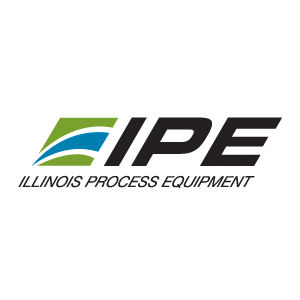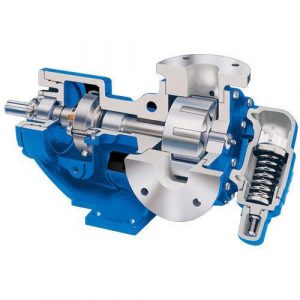Gear Pumps
Illinois Process Equipment, IPE, offers gear pumps, a positive displacement type of pump that is ideal in applications where viscous fluids are involved or steady flows are required. Gear type pumps can be either internal or external and use the action of rotating gears to transfer fluids. IPE offers the best brand names in gear pump manufacturers with value-added services such as full system design, installation and repairs along with expert technical capabilities.
Showing all 18 results
-

Eclipse E02ALUF-F Gear pumps
-

Eclipse E05ALUF-F Gear pumps
-

Eclipse E125ULUR-F Gear pumps
-

Eclipse E12ALUF-F Gear pumps
-

Eclipse E25ALUO-F Gear pumps
-

Eclipse E75ULUR-F Gear pumps
-

Eclipse EH02KBVF-X Gear pumps
-

Eclipse EH05KBVF-X Gear pumps
-

Eclipse EH125NBVR-X Gear pumps
-

Eclipse EH12KBVF-X Gear pumps
-

Eclipse EH25NBVO-X Gear pumps
-

Eclipse EH75NBVR-X Gear pumps
-

ECO Gearchem
-

ISOCHEM Gear Pump
-

Micropump GA-V21.C8FS.A Gear pumps
-

Micropump GJ-N23.FF1S.A-B1 Gear pumps
-

Oberdorfer N9000 Gear pumps
-

Oberdorfer N991 Gear pumps
Gear Pump Operation: Internal and External
A liquid seal is caused by the rotating gears to create suction at the inlet of the pump. Fluid is pulled into the pump and transferred by the rotating gears to discharge. Gear pumps provide pulse-free, smooth flow which is proportional to the speed of the rotating gears.
Internal Gear Pumps
Internal gear type pumps have two interlocking gears of different sizes, where one gear rotates inside the other. The larger gear is referred to as the rotor and is internal with teeth projected on the inside. The smaller gear is the idler, is typically mounted off-center and is driven only by the rotor.
External Gear Pumps
External gear pumps have two interlocking gears that are identical in size and supported by separate shafts with a motor driving one gear that in turn drives the other gear. Both shafts can be driven by a motor in some cases and are supported with bearings on each side. Because the gears are interlocked, there is no fluid transferred back through the center.
Gear pumps develop suction at the inlet due to the tight tolerances between the casing and the gears. This prevents fluid leaks from the discharge side although leaks are more likely to occur with lower viscosity fluids.
Gear Pump Applications
Gear pumps provide smooth pumping of a wide range of fluids from thin, low viscosity liquids to high viscosity fluids, although they are ideal with higher viscosity, thicker materials and operate across a broad range of temperatures. Gear pumps are considered rotary pumps and the majority are driven electrically. Gear pumps can be used reliably for metering or dosing applications when paired with a flow meter.
There can be overlap between capabilities of air operated diaphragm (AOD) and gear pumps, although gear pumps generally do not handle solids as well as AOD pumps. IPE offers technical assistance in choosing the best pump type for your application.
Internal Gear Pump Applications
Internal gear type pumps are versatile with a wide operating viscosity range and are often used on thin liquids such as solvents, fuel oil and water although excel with pumping thicker liquids such as adhesives, asphalt and even chocolate. Internal gear pumps operate well across various temperatures up to 400°C. Common internal gear pump applications include:
- Paints, pigments, inks
- Solvents and alcohols
- Lube and fuel oil
- Glycol
- Polymers and resins
- Tar, asphalt, and bitumen
- Food products including chocolate, peanut butter, syrups
- Cosmetics, soaps, and surfactants
- Polyurethane foam
Internal gear pumps provide more suction capabilities than external gear pump types and are more suited for higher viscosity fluids. Internal gear pumps are typically used in blending and metering applications as output is related directly to the speed of the rotation. Internal gear pumps provide accurate flow control with low internal volume for reliable measuring. They are usually made from stainless steel or cast iron although newer composites allow for the handling of corrosive materials such as sodium hydroxide, ferric chloride, sulfuric acid, and sodium hypochlorite.
External Gear Pump Applications
External gear pumps are preferred when dosing is required such as with chemical additives, water treatment polymers, or fuels. Common external gear pump applications include:
- Lube and fuel oils (ideal in engine and gear box lubrication systems)
- Chemical blending and mixing, distillation
- Polymer and chemical additive metering
- Resins, adhesives, and polymers
- Solvents and alcohols
- Acids or caustic materials (with stainless steel construction)
- Water
- Agricultural, industrial, and mobile hydraulics
Gear Pump Features and Benefits
Gear pumps provide many benefits such as simple and compact operation with few moving parts. Gear pumps cannot match the flow rates provided with centrifugal pumps or the pressure of reciprocating pumps, although they provide higher throughput and pressure than lobe or vane pumps. Internal gear pumps are self-priming; however, they should not be run dry for extended periods. Some gear type pumps can operate in both directions, to load and unload materials.
It is important to make sure that the temperature range of the application is compatible with the specifications of the gear pump. Illinois Process Equipment, IPE, offers technical assistance in choosing the best pump type for your application.
IPE offers sealless magnetic drive gear pump designs from Pulsafeeder (Eclipse and Isochem brands), Tuthill, Micropump, and Oberdorfer. Sealless pumps prevent wear of mechanical seals and reduce maintenance time and costs. Ask about our sealless magnetic drive options when leak free pumping is necessary.


